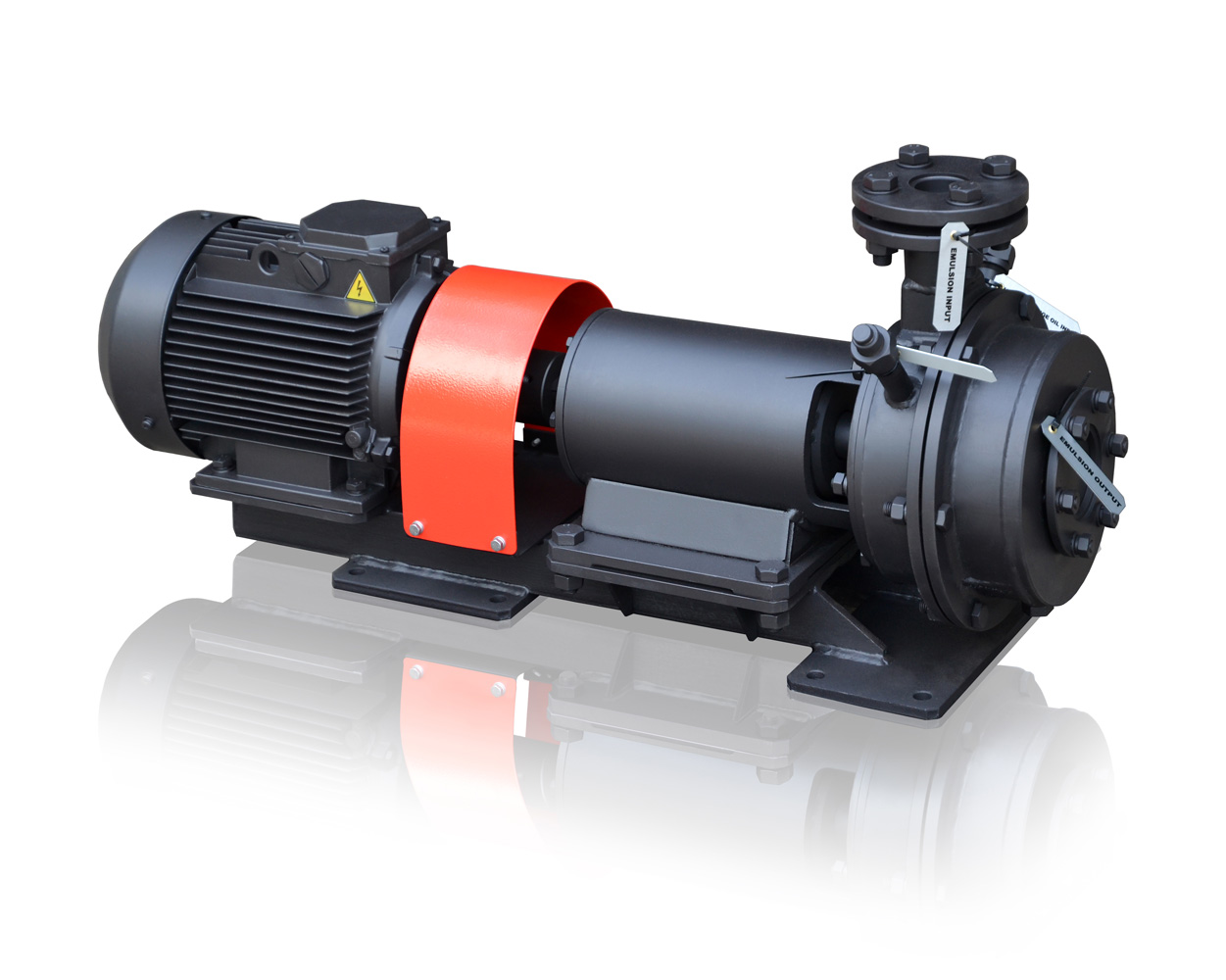Colloid mill is a technical device used for high fineness grinding, dispersion, emulsification and preparation of homogeneous solutions.
The cutting mechanism of colloid mills can consist of:
- single sickle knives;
- knives paired with a cutting unit with gratings, fingers, reflectors, disks etc.;
- combined cutting apparatus.
Knives can be smooth or toothed. In most cases they are installed on a shaft, disk, drum, spider or worm-screw. The grater can be flat, cylindrical or conical. There are portable and stationary, rotating or oscillating gratings. Fingers and reflectors have sharpened edges.
Pairing a cutting device in a colloid mill gives a combination of a rotating rotor and a stationary stator. Rotors and stators can be either smooth or toothed. The feedstock is fed into a mill by pumps, or manually. The milled product is moved and forced out by rotating discs, blades, screws of the cutting apparatus.
Normally a colloid mill consists of a feed hopper attached to a mill cover, conical shape milling chamber, spiral blade, cap nut, cutting mechanism, nozzle and output pipe. It is technically possible to control the device capacity by varying the gap between its rotor and stator (usually within the range of 0.05-1.5 mm) – in each particular case its performance will depend on the required fineness of the processed product.
The mill is driven by an electric motor. Initially the feedstock is loaded into a hopper then it flows into the cutting mechanism, goes through a rotor-stator gap, gets milled and goes out through a nozzle. The range of materials that can be processed by colloid mills is quite wide: bitumen, dairy products, pharmaceuticals, and many more.
GlobeCore produces colloid mills that can be used in road construction, chemical, food, construction, engineering, and oil industries. GlobeCore – is the key to high-quality grinding, emulsification, dispersion and homogenization of different materials to suit all the requirements of the technological process!
Every customer gets an individual approach!

